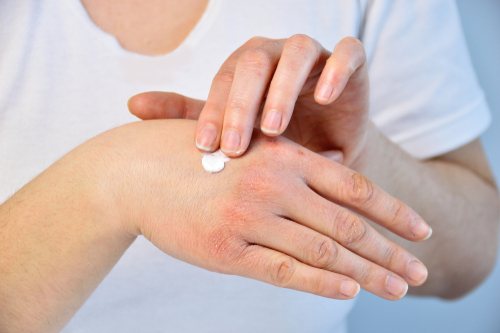Bactroban-resistant Bacteria Commonly Found in Skin Wounds of EB Patients, Study Shows

Skin colonization by bacteria resistant to Bactroban (mupirocin) is frequent among patients with epidermolysis bullosa (EB), and may be due to home skin care practices, according to researchers at Columbia University.
The finding was reported in the study “Wound culture isolated antibiograms and caregiver-reported skin care practices in children with epidermolysis bullosa,” published in the journal Pediatric Dermatology.
EB is a family of rare genetic diseases caused by mutations in genes that give instructions for proteins required to provide structure and resistance to the skin. People with EB have fragile skin that can easily form blisters and wounds in response to minor injuries or friction. But the clinical presentation and molecular features of EB are variable.
“In daily clinical practice, an interdisciplinary approach and partnership with patients and their families is essential for appropriate management,” the researchers wrote.
Despite proper daily care that these patients may have with their skin, they are still at risk of developing chronic wounds, systemic infections, antibiotic resistance, and associated complications.
Researchers believe that improved knowledge on how skin care may change wound vulnerabilities can help identify risk factors and may help improve antimicrobial treatment recommendations.
A total of 23 EB children and teens in New York City, ages 2 months to 18 years old, were enrolled in the study.
More than half the patients or their caregivers said they used the topical antibiotics Bactroban and Neosporin (bacitracin). Polysporin (bacitracin/polymyxin B) ointment and medical-grade honey were used less by the patients. Other products and antimicrobials were also used, including Elta SilverGel (silver 55 ppm), Hibiclens (chlorhexidine gluconate), and Silvadene cream (silver sulfadiazine).
“Fewer than half of patients indicated that they regularly used dilute bleach or dilute vinegar baths, rinses, or compresses as part of their skin cleansing routine,” the researchers wrote.
To analyze the bacterial content in chronic or acute wounds, a total of 60 samples were collected from the 23 patients.
The team identified 11 different microorganisms, the most common being methicillin-susceptible and methicillin-resistant Staphylococcus aureus, Streptococcus species, and Pseudomonas aeruginosa.
At the start of the study about 30% of the patients had wound colonization by S. aureus resistant to Bactroban, a frequency that increased to 65% during the two-year course of the study.
“Given the widespread resistance to many systemic and topical antibiotic agents in individuals with EB, surveillance cultures with routine testing for mupirocin [Bactroban] resistance may help guide antibiotic stewardship and counseling,” the researchers said.
Taking into account current guidelines, like applying antibiotics only to infected lesions and frequently changing topical treatments to avoid the development of resistance, researchers observed some troublesome care practices.
“Areas of concern are the use of antibiotics on intact skin or ‘clean’ wounds and reliance on one type of topical antibiotic rather than alternating medications,” researchers wrote.
“This discrepancy between guidelines and actual patient use highlights the importance of patient education with regard to reinforcing best practices for topical antibiotic use, especially in light of increasing antibiotic resistance,” they added.
The team also emphasized that more studies are needed to determine the relationship “between home bathing routines, antibiotic resistance, and which recommendations result in the best outcomes for the wide range of individuals with EB.”






